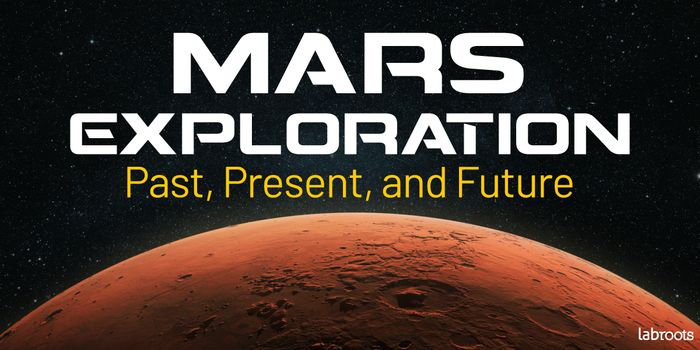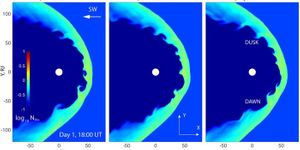BepiColombo Mission: Probing Mercury's Unique Auroras and Magnetosphere
A recent study published in Nature Communications discusses the processes that produce auroras on the planet Mercury that were examined from the first flyby of the joint European Space Agency (ESA) and Japanese Aerospace Exploration Agency (JAXA) mission, BepiColombo. This historic flyby occurred on October 1, 2021, and comes after the spacecraft has spent the last five years cruising throughout the solar system since its October 2018 launch. While auroras on Mercury were first observed by NASA’s MESSENGER spacecraft, BepiColombo is the first to determine the processes that trigger them, which is by the solar wind interacting with Mercury’s surface.
Artist's rendition of the joint ESA/JAXA BepiColombo spacecraft flying through the surface-triggered X-ray auroras of Mercury that were investigated for this study. (Credit: Thibaut Roger/Europlanet)
After BepiColombo successfully determined the boundaries and composition of Mercury’s magnetic field, also known as the magnetosphere, including the bow shock and magnetopause, the data also revealed that the tail region of the magnetosphere guides the high energy electrons down to the surface, which results in X-rays being emitted due to the thin atmosphere not restricting the electron’s movements. It is these X-ray emissions that produce the auroral glow.
“For the first time, we have witnessed how electrons are accelerated in Mercury’s magnetosphere and precipitated onto the planet's surface,” said Dr. Sae Aizawa, who is at JAXA's Institute of Space and Astronautical Science (ISAS) and University of Pisa, Italy, and lead author of the study. “While Mercury’s magnetosphere is much smaller than Earth’s and has a different structure and dynamics, we have confirmation that the mechanism that generates aurorae is the same throughout the Solar System.”
As noted, this was the first flyby of Mercury by BepiColombo, but this does not signal the beginning of the mission, however, as five more flybys were scheduled to be carried out before the spacecraft official achieves orbit around Mercury in December 2025, with the most recent occurring on June 19, 2023. These multiple flybys are required to slow down the spacecraft enough to successfully enter a stable orbit due to the strong gravitational pull from the Sun.
Video time-lapse of BepiColombo conducting its third flyby of Mercury on June 19, 2023.
While auroras are very common on Earth, as they have been observed both from the ground and the International Space Station, these fantastic light shows have also been observed on Jupiter and Saturn, both of which have magnetic fields that dwarf Earth’s.
What new discoveries will scientists make about Mercury’s auroras and the processes that produce them in the coming years and decades? Only time will tell, and this is why we science!
As always, keep doing science & keep looking up!
Sources: Nature Communications, European Space Agency, NASA, National Oceanic and Atmospheric Administration, Europlanet Society, European Space Agency (1), NASA (1), NASA (2), NASA (3)









